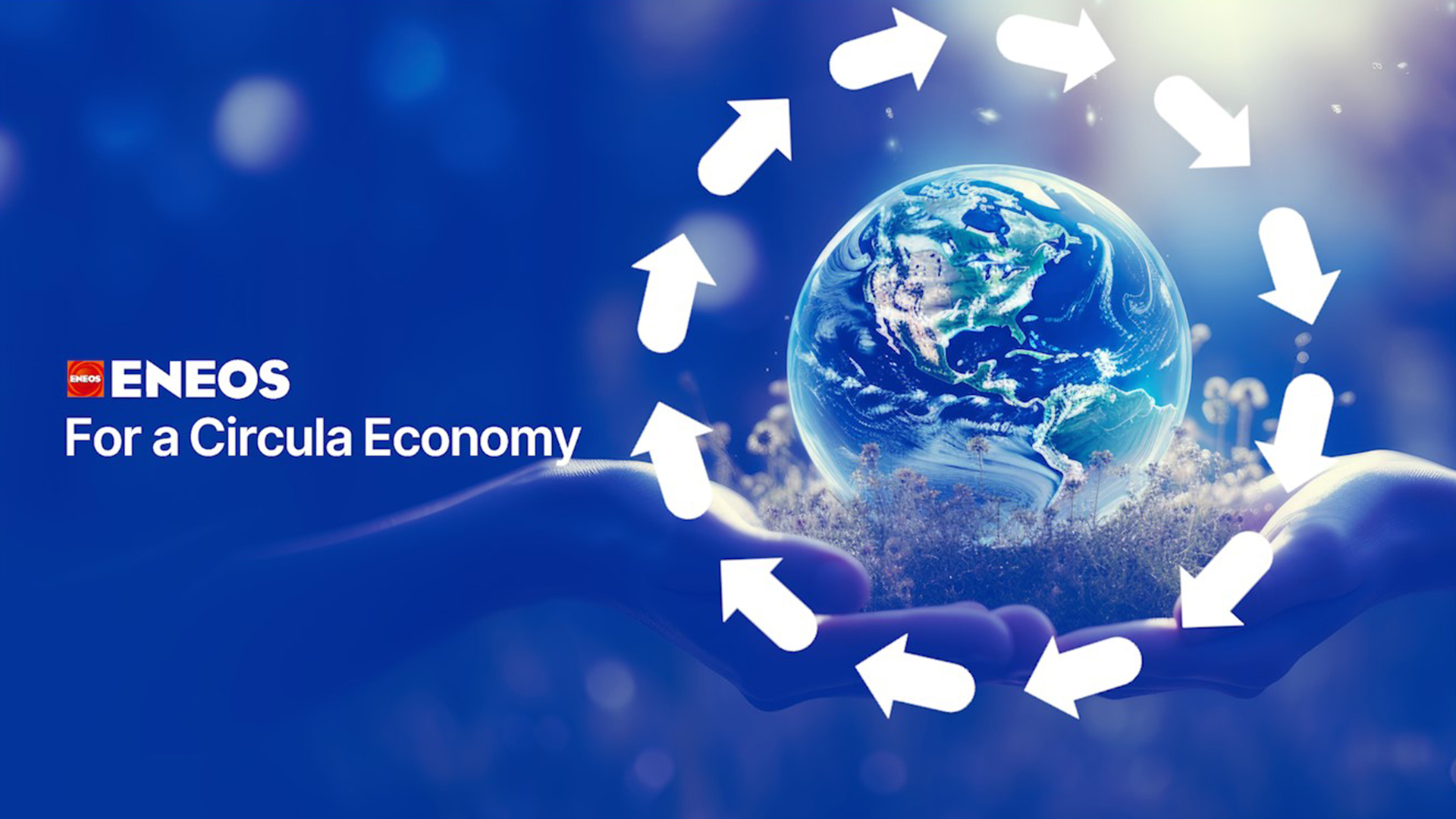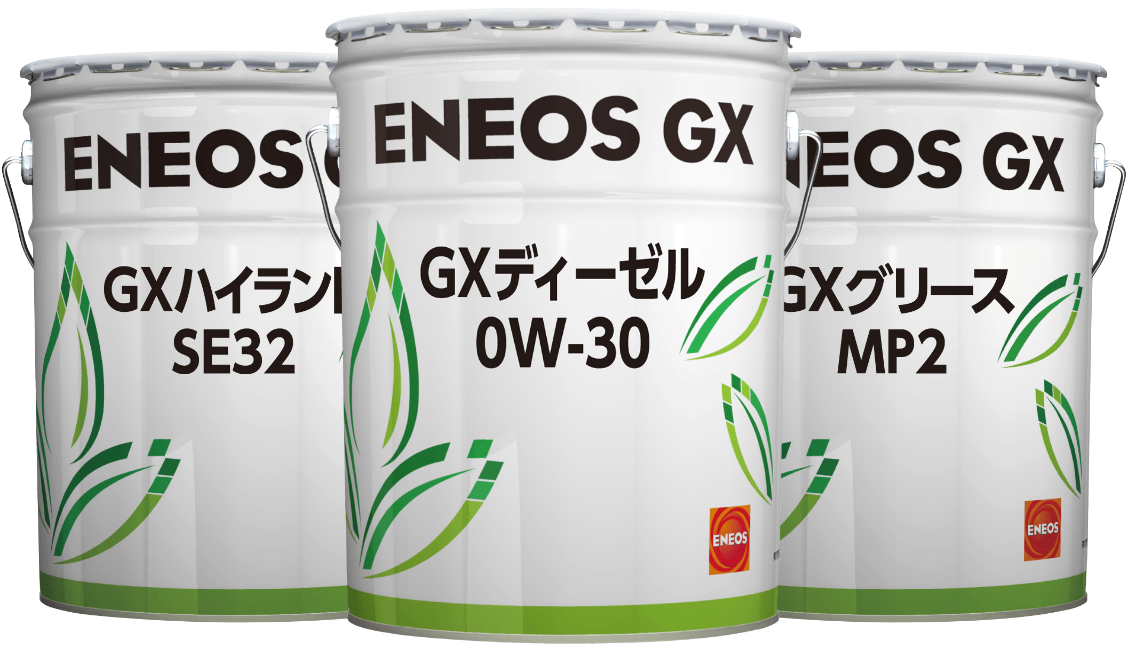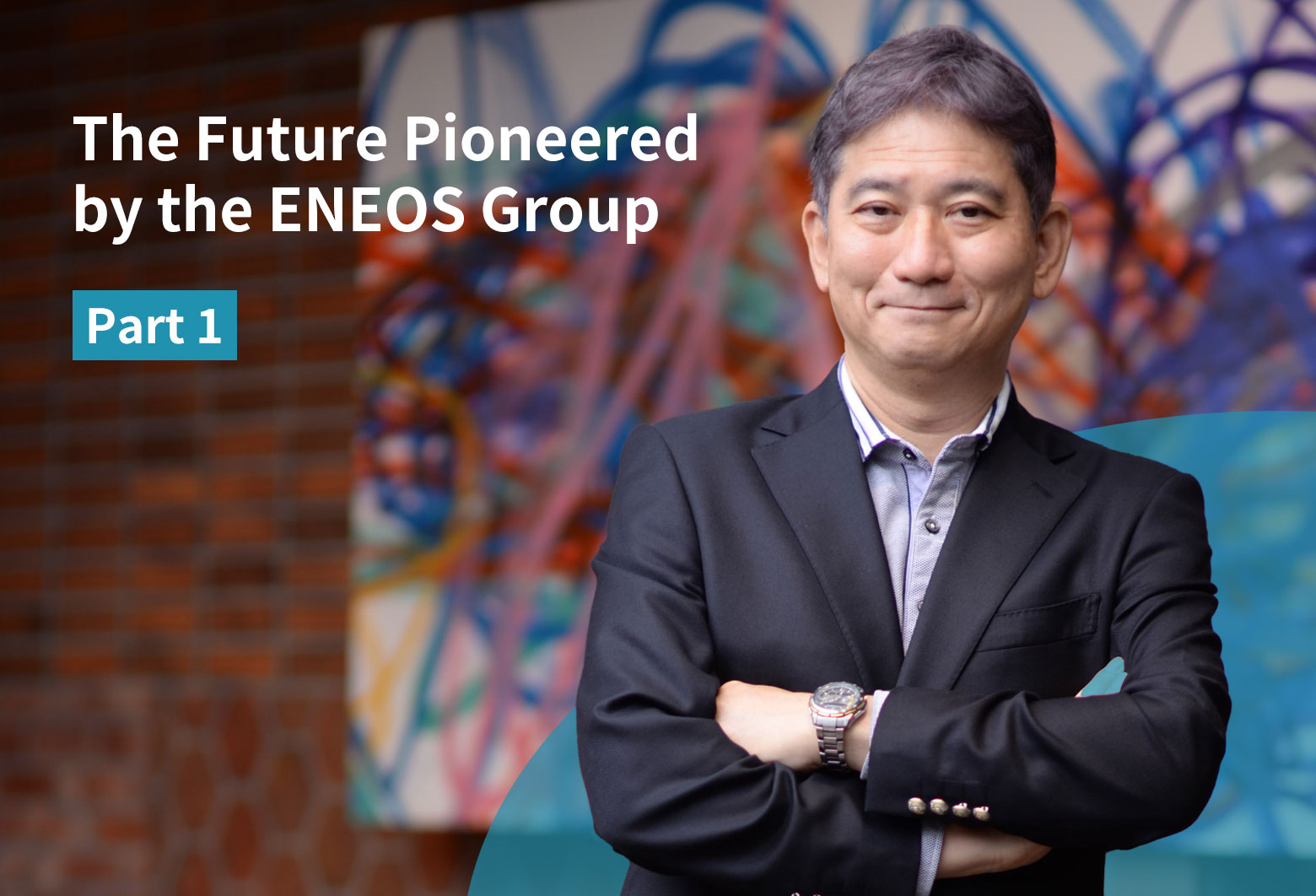The ENEOS Group’s Innovation Capabilities and the Need for International Cooperation
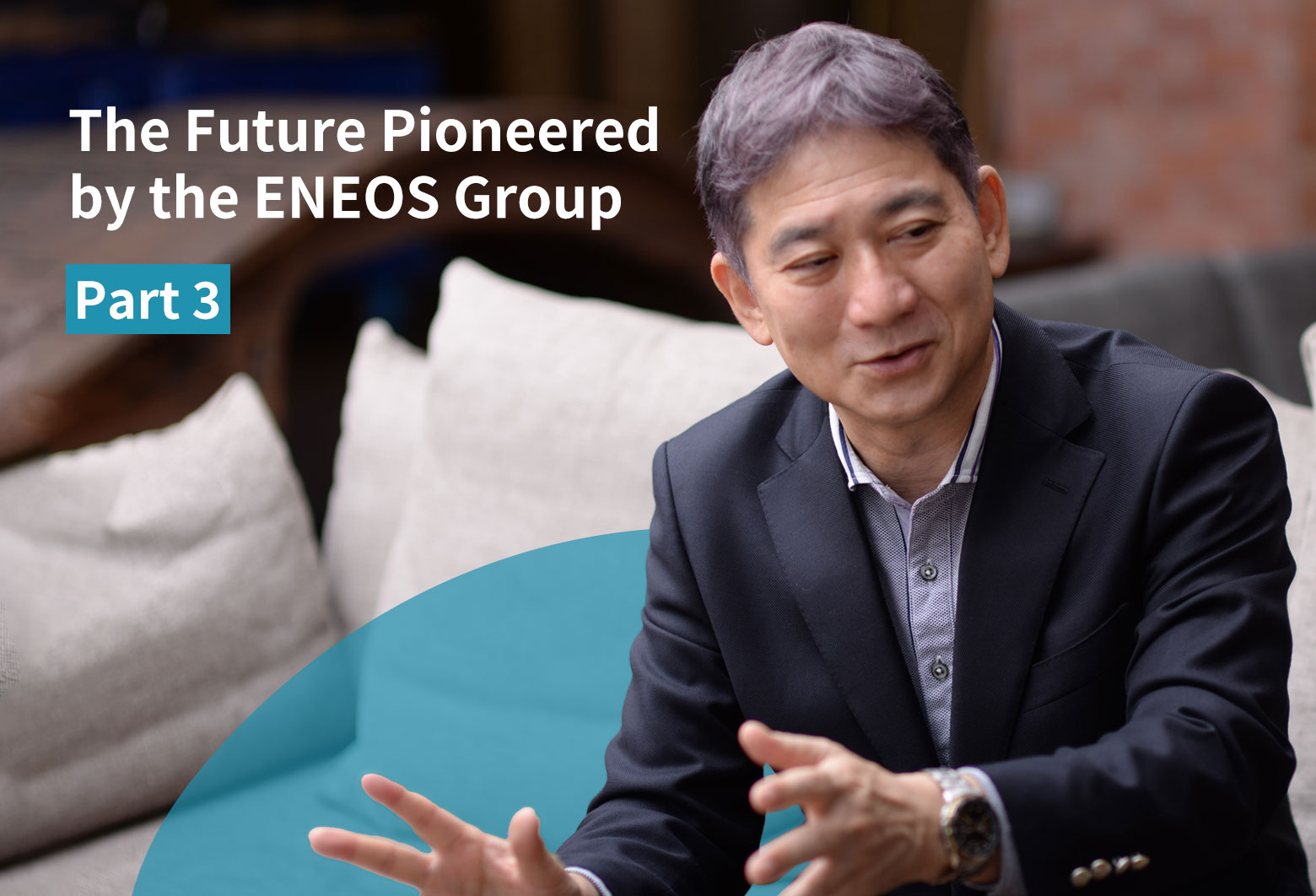
The ENEOS Group, as a leader in the energy and materials industry, aims to achieve a carbon-neutral society by 2050 while utilizing renewable energy, biomass, and carbon dioxide capture and storage (CCS). In this three-part series, we asked Fujiyama Yuichiro, CTO of ENEOS Holdings, what kind of technological development and strategies the Group is pursuing to achieve this goal. In the previous article (Part 2), we asked about the development of various innovative technologies being promoted by the ENEOS Group, such as DirectMCH®, synthetic fuels, bioethanol production technology, and Matlantis™. In this final article, we will delve into the ENEOS Group's development capabilities and ability to create innovation.
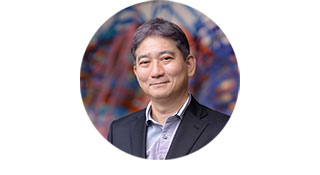
Senior Vice President, CTO
ENEOS Holdings, Inc.
A small group of elite multi-specialty researchers are supporting the creation of diverse open innovation.
International cooperation is important for social implementation.
—In this part, we’d like to ask you about the development and innovation capabilities of the ENEOS Group.
Fujiyama: The ENEOS Group runs an in-house venture program called Challenge X that invites ideas for new businesses from across the Group and aims to refine and commercialize the best of them.
One successful idea from the program is the ENEOS Dry Ice Jacket (see figure below). Production sites, whether indoors or outdoors, tend to get hot, thereby requiring measures to prevent heatstroke. This jacket can be worn with dry ice in the inner pockets to efficiently cool the body. It was very well received by employees at our refineries who tried it, so we created the first startup of the program (ENEOS Amenity) and began selling it outside the Group as well.
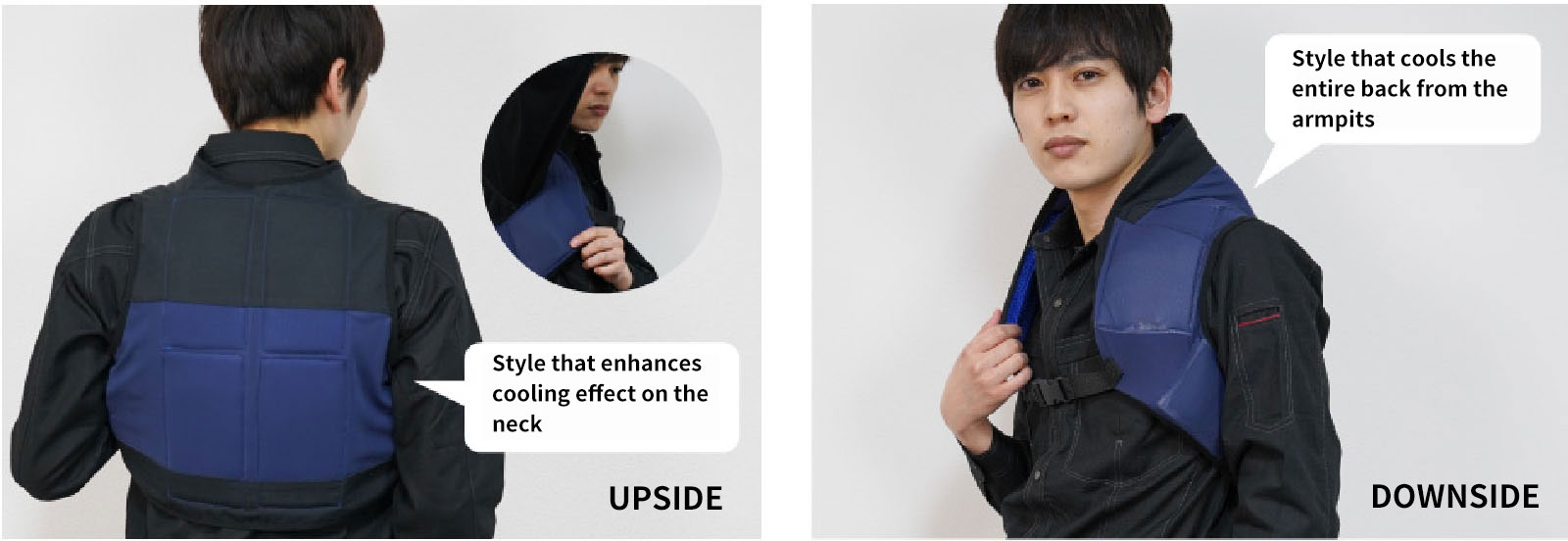
—So there’s a spirit of wanting to try new things and create new technology throughout the ENEOS Group, not just specific departments.
Fujiyama: The ENEOS Group has sites such as refineries, and the fact that issues and problems that arise at these sites are shared within the Group is big for us. As with the Dry Ice Jacket and the automated operation I mentioned previously (see Part 2 <link>), having sites means that when new ideas come up, we can immediately try them out. We’re also making use of this strength to develop a lot of technologies that aim to solve problems at sites.
—So the seeds of innovation lie in sites. You were the general manager of the Central Technical Research Laboratory (see below), the heart of research and development at the ENEOS Group. Is there a kind of DNA that is common among all researchers at the Group?
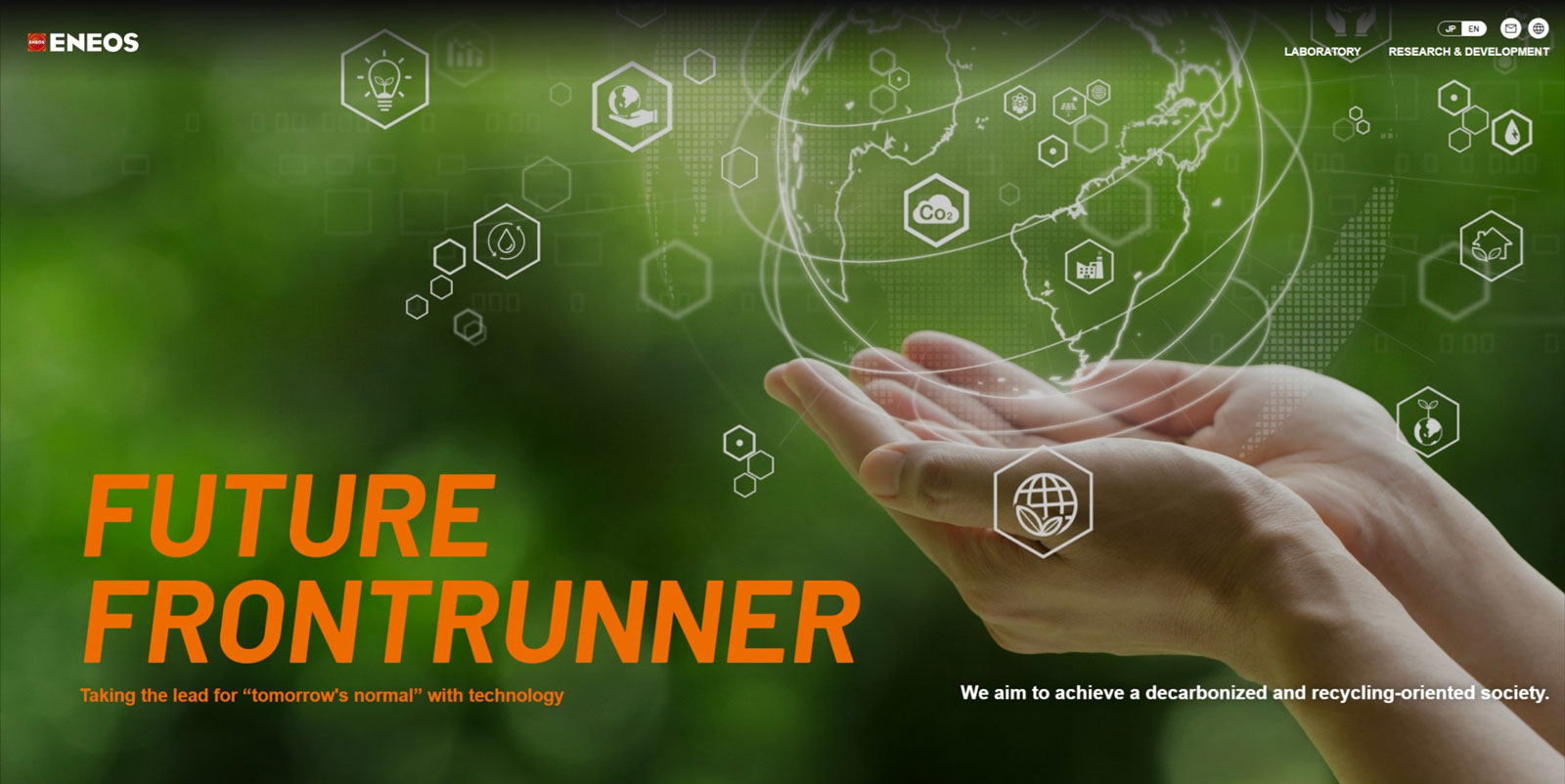
Fujiyama: The ENEOS Group’s research and development is composed of a small group of elite researchers. While major general chemical manufacturers have nearly 10,000 researchers, we only have a few hundred. We’re in the infrastructure industry, and even when looking at the Group as a whole, there’s not many personnel compared to sales, and the number of researchers is also limited.
There are inevitably limits to what we can do on our own, so we’ve been working on research and technology development by connecting with people from various organizations, such as companies, academia, and government agencies. In such an environment, there’re researchers who focus on their own specialized fields thoroughly, but there’re also many people in coordinator-like roles who start by having discussions with various people from outside the organization and then come up with new business or development ideas.
I believe that people make a company, and having a small number of staff is a weakness, even in a research department, so I tell my researchers that they need to be aware of this and always be humble. However, having researchers who are good at coordinating makes collaboration with external parties go smoothly, which leads to co-creation and open innovation.
—That’s different from how researchers are at a typical company.
Fujiyama: I think not limited to the ENEOS Group, many researchers are multi-specialty human resources (Note 8); even if they are specialists in one field, they can easily acquire expertise in other fields. For example, I talked last time about Matlantis™, an ultrahigh-speed atomistic simulator that we developed in collaboration with Preferred Networks (PFN). Half of the researchers from ENEOS who were involved in the project alongside PFN’s top-class engineers were not actually computer scientists; they were originally researchers into catalysts for oil refining and chemical processes. It’s quite surprising.
But even looking back on my own career, I've changed my research theme several times, from chemistry at university, to biotechnology in my master’s program at graduate school, and petroleum refining catalysts after joining ENEOS. Looking at it from another perspective, I think that if you cultivate the basic skills and mindset for research and development, you can solidly transition into other fields. So, when we’re hiring, we often tell prospective employees that how they’ve conducted their research and what kind of thought patterns they’ve had is more important than their specialty.
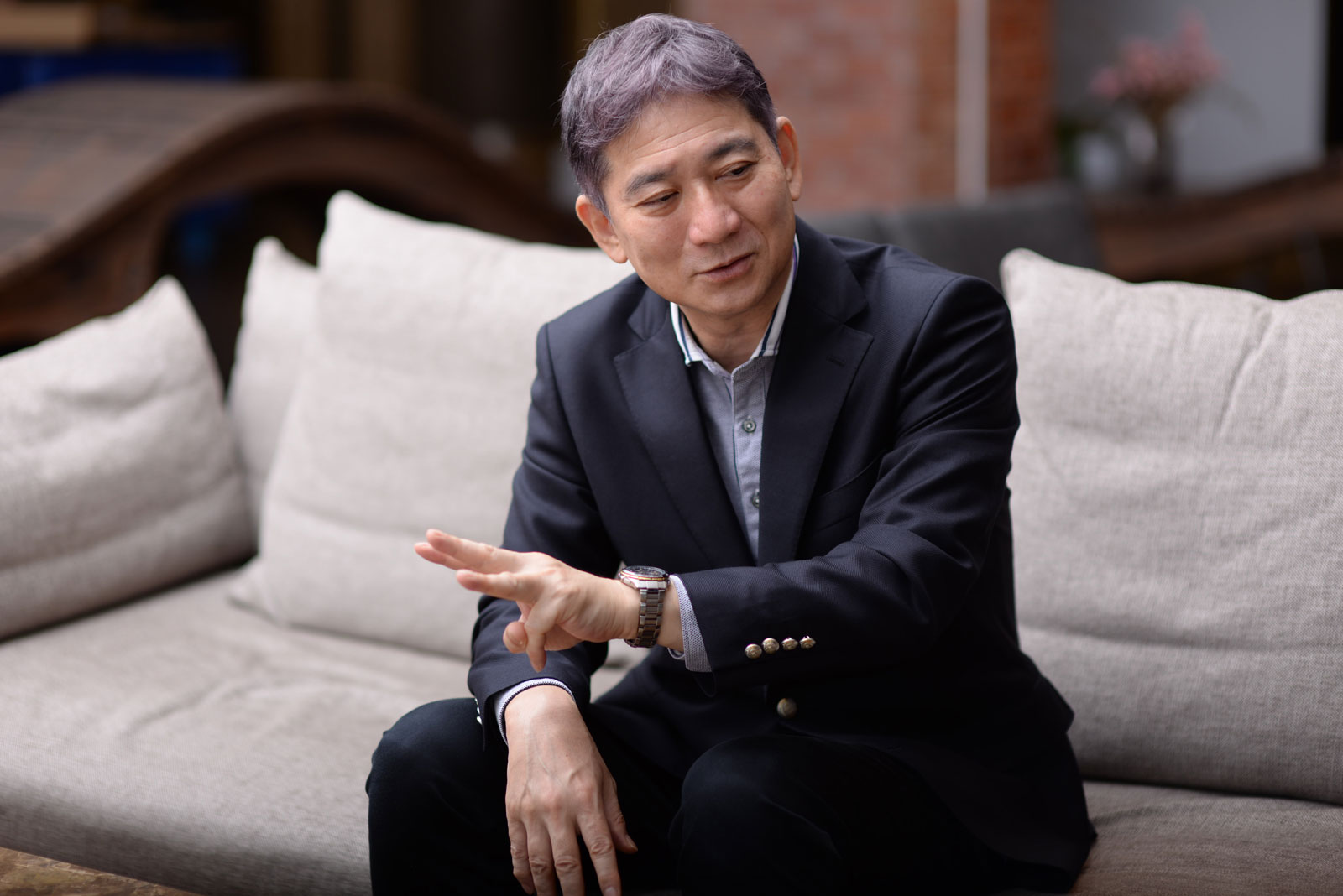
—The ENEOS Group is leading the way in technological development in the energy and materials industries in Japan. What do you think the challenges will be when you look ahead and consider the implementation of these technologies in society?
Fujiyama: The cost of going carbon neutral in Japan is high by global standards. On the other hand, Japan’s CO₂ emissions (Note 9) are only 3% of the world’s total. Therefore, if Japan is the only country that is eager to go carbon neutral, it’ll only increase our cost burden and decrease our international competitiveness; there won’t actually be much impact on global warming.
From this perspective, I think it’s very important to keep pace with other countries in going carbon-neutral; in other words, international cooperation. While the ENEOS Group is steadily developing technologies and preparing for carbon neutrality, we’d like to determine the appropriate timing for commercializing our technologies in response to the demands of society.
—Thank you for sharing these interesting thoughts with us. Do you have a message for those reading these articles?
Fujiyama: The ENEOS Group’s slogan is “Supporting ‘today’s normal,’ taking the lead for ‘tomorrow’s normal.’” Our materials are used in smartphones, and if you drive a car, you may use our service stations. In that sense, we’re proud to be a part of today’s normal.
These materials and energy will not disappear anytime soon, and we’ll do our best to continue supplying them so as not to cause any inconvenience in your daily life. At the same time, we believe it’s our responsibility to lead the way to a carbon-neutral future. Our technology will still be useful for people to live and work comfortably in 2040 and 2050; we envision such a future. I hope that our thoughts reach you and we can create this future together.
Part 1: The ENEOS Group’s Technological Strategy to Achieve Carbon Neutrality
Part 2: The ENEOS Group’s Innovative Technologies and Open Innovation
Note 8
Multi-specialty human resources:
This is one of the human resource categories based on the human resource classification method. Multi-specialty human resources are rare individuals who have expertise in two or more specialized fields as well as knowledge of a wide range of genres outside their field of expertise. Compared to single-specialty human resources who specialize in one field and generalized specialists, multi-specialty human resources tend to be valued as people who can create original ideas and bring about innovation based on their expertise and skills across multiple fields and wide-ranging knowledge.
Note 9
Japan’s CO₂ emissions:
Japan’s CO₂ emissions totaled 1 billion tons according to “Global CO₂ Emissions from Energy Consumption (2021)” prepared by the Ministry of the Environment based on the results of a survey by the International Energy Agency (IEA). Japan ranks 6th after China, the United States, EU, India, and Russia by country/region, accounting for 3% of the world’s total. China is by far the largest emitter at 10.65 billion tons, and together with the United States in second place, they account for 45.3% of global CO₂ emissions.




